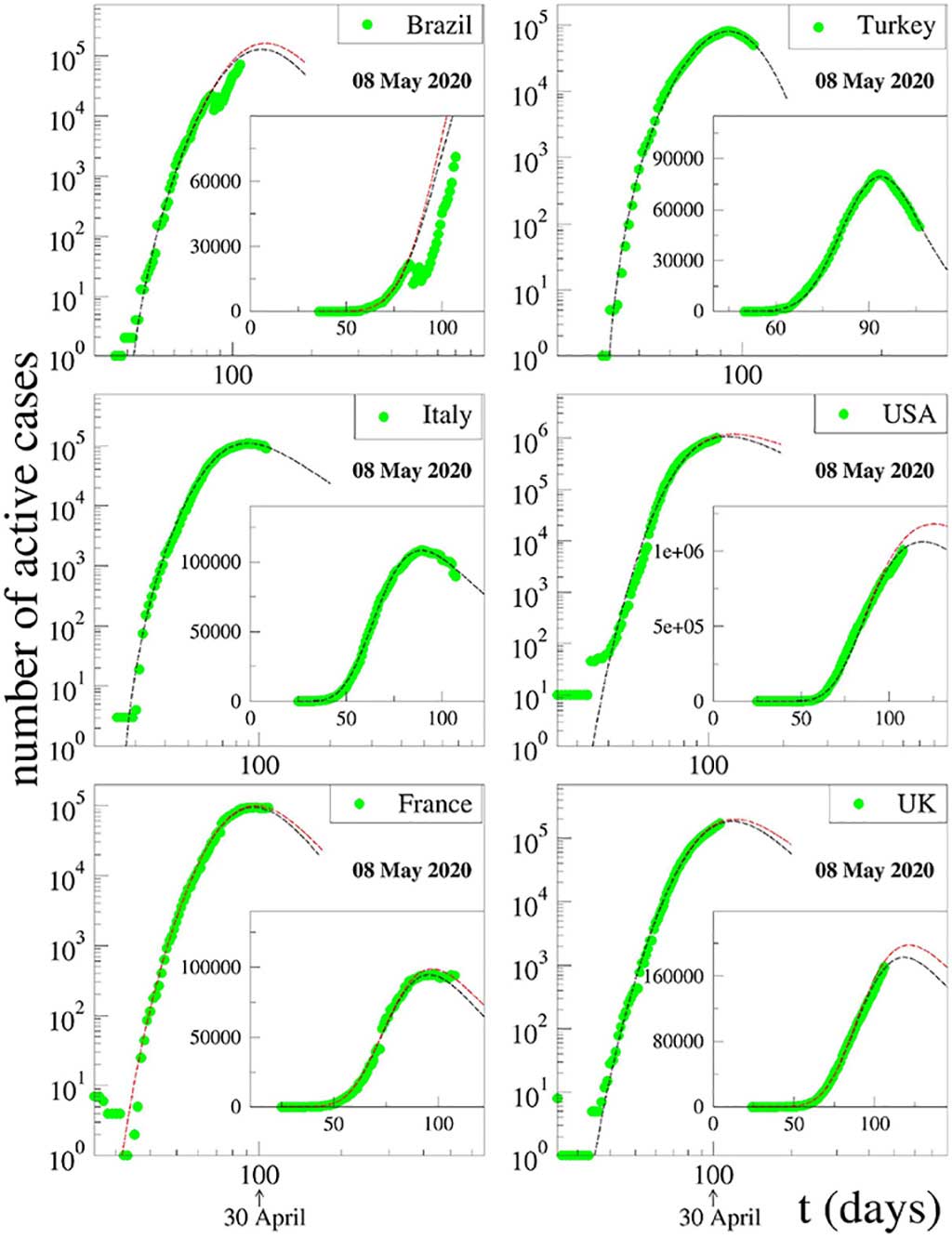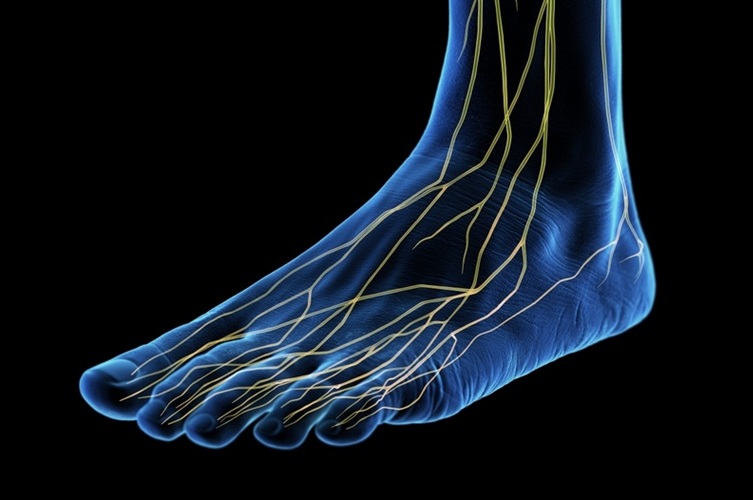Statistical Tool Predicts COVID-19 Peaks Worldwide
|
By HospiMedica International staff writers Posted on 11 Jun 2020 |

Image: Data for active cases in severely affected countries with Equation (Photo courtesy of Frontiers)
A new study shows how a unique set of functions and probability distributions can predict forthcoming peaks in the spread of COVID-19.
Developed by researchers at Santa Fe Institute (NM, USA), Ege University (Bornova, Turkey), and other institutions, the tool is based on a q-statistical functional form that accurately describes all existing available data on active cases and deaths in most countries around the world, and can also predict forthcoming peaks satisfactorily. Using data from China, where the active case rate seems to have peaked, they first set the main parameters for the formula. Next, they applied it to other countries, including France, Brazil, and the United Kingdom, and found that it matched the evolution of the active cases and fatality rates over time.
The tool was developed following analysis of the active cases and deaths per day--based on inspection of public data--and the time evolution of the number of active cases, which showed a rather intriguing similarity with the distributions of volumes of stocks on Wall Street. The researchers claim it lies in the realm of complex systems, which includes not only high-frequency financial transactions, but also other fields, such anthropological issues, q-Weibull distribution-like systems, and biotech intercorporate networks. The study was published on May 29, 2020, in Frontiers in Physics.
“The present prediction algorithm could, in principle, be included within an internet app, which could access the data publicly available at a given website and automatically update the predicted dates and heights of the disease peaks of epidemics, such as the present Covid-19 one,” concluded study authors Constantino Tsallis, PhD, of Santa Fe Institute, and Ugur Tirnakli, PhD, of Ege University. “The functional form seems to be universal. Not just for this virus, but for the next one that might appear as well.”
The original financial graph appeared in a 2004 volume co-edited by Dr. Tsallis and the late 1969 Nobel Prize in Physics Murray Gell-Mann. Dr. Tsallis went on to develop developed q-statitics, also known as "Tsallis statistics" in the late 1980s, as a generalization of Boltzmann-Gibbs statistics to complex systems.
Related Links:
Santa Fe Institute
Ege University
Developed by researchers at Santa Fe Institute (NM, USA), Ege University (Bornova, Turkey), and other institutions, the tool is based on a q-statistical functional form that accurately describes all existing available data on active cases and deaths in most countries around the world, and can also predict forthcoming peaks satisfactorily. Using data from China, where the active case rate seems to have peaked, they first set the main parameters for the formula. Next, they applied it to other countries, including France, Brazil, and the United Kingdom, and found that it matched the evolution of the active cases and fatality rates over time.
The tool was developed following analysis of the active cases and deaths per day--based on inspection of public data--and the time evolution of the number of active cases, which showed a rather intriguing similarity with the distributions of volumes of stocks on Wall Street. The researchers claim it lies in the realm of complex systems, which includes not only high-frequency financial transactions, but also other fields, such anthropological issues, q-Weibull distribution-like systems, and biotech intercorporate networks. The study was published on May 29, 2020, in Frontiers in Physics.
“The present prediction algorithm could, in principle, be included within an internet app, which could access the data publicly available at a given website and automatically update the predicted dates and heights of the disease peaks of epidemics, such as the present Covid-19 one,” concluded study authors Constantino Tsallis, PhD, of Santa Fe Institute, and Ugur Tirnakli, PhD, of Ege University. “The functional form seems to be universal. Not just for this virus, but for the next one that might appear as well.”
The original financial graph appeared in a 2004 volume co-edited by Dr. Tsallis and the late 1969 Nobel Prize in Physics Murray Gell-Mann. Dr. Tsallis went on to develop developed q-statitics, also known as "Tsallis statistics" in the late 1980s, as a generalization of Boltzmann-Gibbs statistics to complex systems.
Related Links:
Santa Fe Institute
Ege University
Channels
Critical Care
view channel
Radioactive Microscopic Beads Could Treat Patients with Kidney Cancer
Kidney cancer occurs when cells in the kidney become malignant and begin to grow uncontrollably, often leading to limited treatment options when surgery is not viable. Many patients are ineligible for... Read more
First-Ever Medical Technology Regrows Nerves and Stops Amputations in Diabetic Patients
Chronic wounds are among the most devastating and costly complications for diabetic and trauma patients, often leading to severe infections, tissue death, and amputations. Despite the global wound care... Read more
AI Tool Reduces Serious Complications and Readmissions After Colorectal Cancer Surgery
Readmissions and complications after colorectal cancer surgery remain a major challenge for both patients and healthcare systems. These setbacks increase suffering, prolong recovery, and result in high... Read moreSurgical Techniques
view channel
Revolutionary Reusable Duodenoscope Introduces 68-Minute Sterilization
Cross-contamination during endoscopic procedures has remained a persistent challenge for healthcare providers, posing risks to both patients and hospitals. While advances in endoscope reprocessing have... Read more
World's First Transcatheter Smart Implant Monitors and Treats Congestion in Heart Failure
Heart failure is one of the leading causes of hospitalization worldwide, with millions of patients requiring ongoing treatment to manage congestion. Current therapies often involve tracking remotely measured... Read morePatient Care
view channel
Revolutionary Automatic IV-Line Flushing Device to Enhance Infusion Care
More than 80% of in-hospital patients receive intravenous (IV) therapy. Every dose of IV medicine delivered in a small volume (<250 mL) infusion bag should be followed by subsequent flushing to ensure... Read more
VR Training Tool Combats Contamination of Portable Medical Equipment
Healthcare-associated infections (HAIs) impact one in every 31 patients, cause nearly 100,000 deaths each year, and cost USD 28.4 billion in direct medical expenses. Notably, up to 75% of these infections... Read more
Portable Biosensor Platform to Reduce Hospital-Acquired Infections
Approximately 4 million patients in the European Union acquire healthcare-associated infections (HAIs) or nosocomial infections each year, with around 37,000 deaths directly resulting from these infections,... Read moreFirst-Of-Its-Kind Portable Germicidal Light Technology Disinfects High-Touch Clinical Surfaces in Seconds
Reducing healthcare-acquired infections (HAIs) remains a pressing issue within global healthcare systems. In the United States alone, 1.7 million patients contract HAIs annually, leading to approximately... Read moreBusiness
view channel
Philips and Masimo Partner to Advance Patient Monitoring Measurement Technologies
Royal Philips (Amsterdam, Netherlands) and Masimo (Irvine, California, USA) have renewed their multi-year strategic collaboration, combining Philips’ expertise in patient monitoring with Masimo’s noninvasive... Read more
B. Braun Acquires Digital Microsurgery Company True Digital Surgery
The high-end microsurgery market in neurosurgery, spine, and ENT is undergoing a significant transformation. Traditional analog microscopes are giving way to digital exoscopes, which provide improved visualization,... Read more
CMEF 2025 to Promote Holistic and High-Quality Development of Medical and Health Industry
The 92nd China International Medical Equipment Fair (CMEF 2025) Autumn Exhibition is scheduled to be held from September 26 to 29 at the China Import and Export Fair Complex (Canton Fair Complex) in Guangzhou.... Read more












